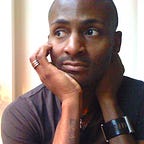Politics
Trump’s Social Media Ban Reveals The Failings Of The Information Age
It’s time to rethink free speech
The day after Donald Trump’s cheerleading encouraged a troupe of YMCA rejects to storm the Capitol and prompted Twitter and Facebook to suspend his accounts, New York Times columnist, Aaron Ross Sorkin, made the following observation:
So Trump has access to the nuclear codes but he can’t Tweet or post to Facebook.
He has a point. It seems like a strange failure of priorities to allow a man who we’ve deemed too irresponsible to use social media to retain control over weapons which could end all life on the planet. But the comparison undervalues the power that unregulated access to a platform of millions of people provides.
To be clear, I’d also feel safer if Donald Trump’s finger was on the ‘Tweet’ button instead of on THE button, but the attack on Wednesday, and the five deaths that resulted from it, prove that both of them have the potential to cause real-world harm.
In a blog post explaining the ban, Facebook CEO, Mark Zuckerberg began by saying the following:
The shocking events of the last 24 hours clearly demonstrate that President Donald Trump intends to use his remaining time in office to undermine the…
